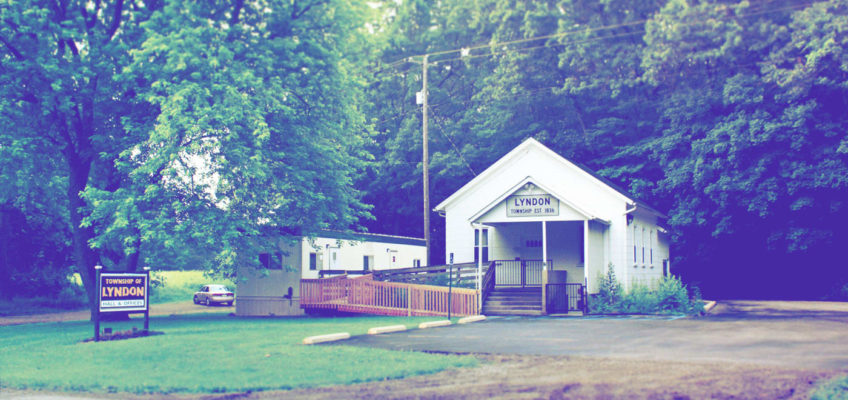Rural communities seeking better broadband have options beyond big telecom.

This article was originally published in Fast Company on January 19th, 2018.
This past August, the residents of the Republican-leaning Michigan town of Lyndon Township overwhelmingly voted to raise their property taxes. What spurred this rural community to violate the core Republican tenant of minimal taxation?
Lack of high-speed internet access.
Speedy internet connections are easy to come by in cities and sprawling suburbs where big cable and telephone monopolies can expect a large return on their investment. But in many rural areas of the country, high-speed internet access is sparse–39% of rural Americans flat-out do not have broadband access.
That’s why Lyndon Township’s residents decided to fund a 3 million dollar broadband project, which increased their property taxes by over $20 per month on average. The end result will be a locally owned network offering a basic 100 Mbps fiber-to-the-home service, which is faster and more reliable than most cable services. As Ben Fineman, president of the Michigan Broadband Cooperative explained, “for people in a rural area, that’s far and away better than anything they can get today.”
This approach isn’t unique: At least 500 other counties and towns in the U.S. have taken steps to end their dependence on monopoly ISPs. Wilson, North Carolina, built their own fiber-optic network and high-speed internet service, defining it as a municipal utility like water or electricity. Westminster, Maryland, entered into an equitable public-private partnership where they own the fiber network infrastructure and lease portions of it to an independent ISP.
But most rural communities still have extremely limited and poor broadband options, if any at all. Only half of American households have access to two or more broadband providers. In Michigan, AT&T owns the majority of the market and is often the only ISP available. These minimally competitive regional markets leave monopoly ISPs with little incentive to improve service or lower prices. It’s an oligopoly, comprised of the nation’s largest telecommunication companies.
Nevertheless, some 20 states have passed preemption laws limiting local government’s authority to build new networks. In most cases the restrictions were lobbied for by powerful incumbent cable and telephone companies to limit competition.
Freshman Michigan Rep. Michele Hoitenga recently tried to introduce a bill to block local governments from funding broadband projects in her state. It quickly surfaced that Hoitenga received over $5,000 in campaign contributions from big telecom and PACs heavily funded by telecommunication companies.
AT&T hired 23 registered lobbyists last year in Michigan alone, with an expenditure of $211,501.09. To put that into perspective, that’s 3.8 times more registered lobbyists than Ford Motor Company and about five times the expenditure of Verizon and Google in the state.
Even after the lobbyist footprints were flagged, Rep. Hoitenga defended her bill, claiming the town of Holland, Michigan, has 37 providers. The vast majority of the city has only one or two options, but there are actually around 14 providers in certain areas, which is exceptionally good–but it is not a product of a market free from government competition. It’s the result of their community-owned broadband network.
That network, which was built over 20 years ago, runs on an open access model, primarily as an efficient means of controlling municipal utility operations. This allows the city to lease the physical strands of fiber to ISPs, creating the competitive broadband market Hoitenga ironically pointed out. Today, Holland leases fiber to six service providers and has connected over 200 customers, many of them small businesses. They are now considering additional options to bring fiber-optics to more businesses and residents.
It’s further proof that rural communities seeking better broadband have options beyond AT&T and other big providers. But it’s only possible when communities and local governments demand real competition by eliminating legal barriers and investing public funds into community-owned networks or existing cooperatives.
The federal government could also help address these instances of gross inaccessibility. A shining example is the Rural Electrification Act, which provided loans to rural cooperatives in the 1930s, bringing electricity to farms and supercharging the local economies. While the FCC has acknowledged rural America’s lack of competition and broadband access, the solutions being offered are ill-conceived and largely benefitting monopoly ISPs that continue to hyperbolize the levels of broadband competition.
If, like Lyndon Township, more rural towns begin to see through the sizable lobbying efforts and legislative cheerleading of big telecoms, then more locally controlled networks will sprout up across the country. Equitable high-speed internet access and competition will follow, and telecommunication companies’ destructive regional monopolies might begin to falter.
Matthew Marcus researches community broadband networks and the local policies that enable them for the Institute for Local Self-Reliance’s Community Broadband Networks initiative. You can find his writing at muninetworks.org and ilsr.org. Additionally, Marcus assists in the production of the organization’s Community Broadband Bits podcast and compiles research for multimedia resources on muninetworks.org. You can email him at broadband@muninetworks.org.
Photo: Dwight Burdette via Wikimedia Commons.





